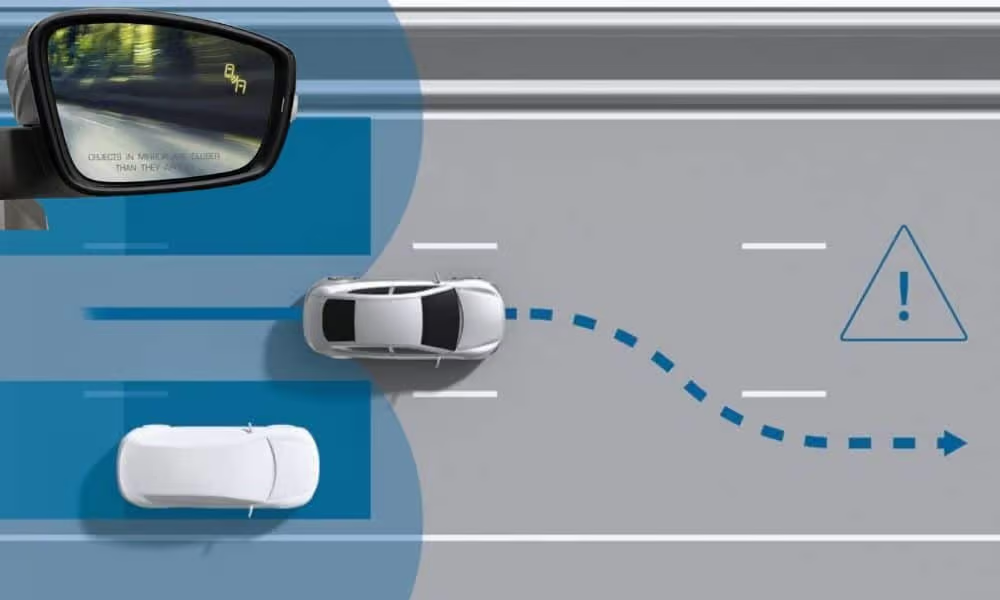Car and road safety has come a long way since the invention of the automobile. Here are ten of the biggest car and road safety innovations that have been developed since motoring began:
1: Seat belts
Seat belts are probably the most well-known safety feature in vehicles today. These devices help to prevent serious injuries by keeping the driver and passengers securely in their seats in the event of a crash. Nils Bohlin, a Volvo engineer, created the contemporary three-point seat belt in 1959. Although the design was protected by a patent, the business determined that, for the sake of public safety, the invention should be left open, making it freely usable by all automakers.
Australia was a leader in making seatbelts compulsory. Front-seat seat belts were made necessary in 1969, and all seats had to have seat belts by 1971. Additionally, since 1971, using a seat belt has been required.
2: Airbags

Airbags are another important safety feature that helps to protect drivers and passengers in the event of a crash. Airbags are designed to deploy in an instant and cushion the impact of a collision, reducing the likelihood of serious injuries.
Most cars now have multiple airbags including driver, passenger and side impact protection. In 2012, Volvo was the first manufacturer to fit external pedestrian airbags.
3: Crash test dummies and ratings
Crash test dummies are used to test the safety of vehicles and help to develop new safety technologies. These dummies are designed to simulate the impact of a collision on the human body, allowing engineers to better understand the forces at work in a crash and develop safer vehicles.
Crash test dummies have been around since 1949 but it took until 1994 for the first child size mannequin and straggeringly, until 2022 for a dedicated female crash test dummy.
4: Anti Lock brakes (ABS)
Anti-lock brakes (often known as ABS) is a safety feature that helps to prevent wheels from locking up during hard braking. This technology uses sensors to detect when the brakes are being applied too hard and automatically modulates the braking force, allowing the driver to maintain control of the vehicle.
Mercedes was the first manufacturer to offer ABS on a production car in 1978 after years of development with its production partner Bosch. The computer revolution occurring at that time helped make the digital technology to record and evaluate sensor data possible. By 1984 ABS became standard on all Mercedes-Benz vehicles although it took much longer to be seen on all brands and price points of cars.
5: Traction control
Traction control is a safety feature that helps to prevent skids and loss of control on slippery surfaces. This technology uses sensors to detect when a vehicle is losing traction and automatically applies the brakes or can reduce engine power to help the driver regain control.
6: Electronic stability control
Electronic stability control is a safety feature that helps to prevent skids and loss of control in cornering. This technology uses sensors to detect when a vehicle is losing traction and automatically applies the brakes or reduced engine power to help the driver regain control.
7: Lane departure warning
Lane departure warning is a safety feature that uses sensors to detect when a vehicle is drifting out of its lane and alerts the driver. This technology can help to prevent accidents caused by lane drift and may also be used in conjunction with lane-keeping assistance systems. Some systems just use an audible warning while others also include haptic feedback to the steering wheel or actively steer the vehicle to stay within its lane.
8: Blind spot monitoring

Blind spot monitoring is a safety feature that uses sensors to detect vehicles in the driver's blind spot and alerts the driver. This technology can help to prevent accidents caused by lane changes and may also be used in conjunction with lane-keeping assistance systems.
9: Automatic emergency braking
Automatic emergency braking (AEB) is a safety feature that uses sensors to detect when a collision is imminent and automatically applies the brakes in an effort to avoid or mitigate the impact. This technology can help to prevent accidents and reduce the severity of collisions. AEB systems continue to get more advanced and specialist car to pedestrian AEB systems will be mandated in Europe from 2024 and will likely become more standard in Australia as a result.
10: Intelligent speed assistance
Possibly a controversial inclusion, Intelligent speed assistance is a safety feature that uses cameras, GPS and mapping data to detect the speed limit and alerts the driver when they are exceeding it. This technology became mandatory in July 2022 within the EU for new vehicles introduced after this date. The controversy stems from the idea that drivers have less control over their own vehicles and some argue there are times where briefly braking a speed limit to complete a safe overtake for example may increase safety. Vehicle manufacturers have also resisted systems which can’t be overridden due to issues such as contradicting speed signs, outdated mapping data and speed signs not always being clearly visible.
In reality, these systems as they stand now can be easily overridden and many simply provide an audible warning which can be stopped. They do however help drivers be more aware of their speed and the current speed limits which should reduce accidental speeding.
Many more innovations look set to come, including a gradual shift to more active driver aids that do the bulk of steering and braking such as Tesla’s Full Self Driving (FSD) beta once it can be proven they offer genuine safety enhancements rather than a risk to road users.
